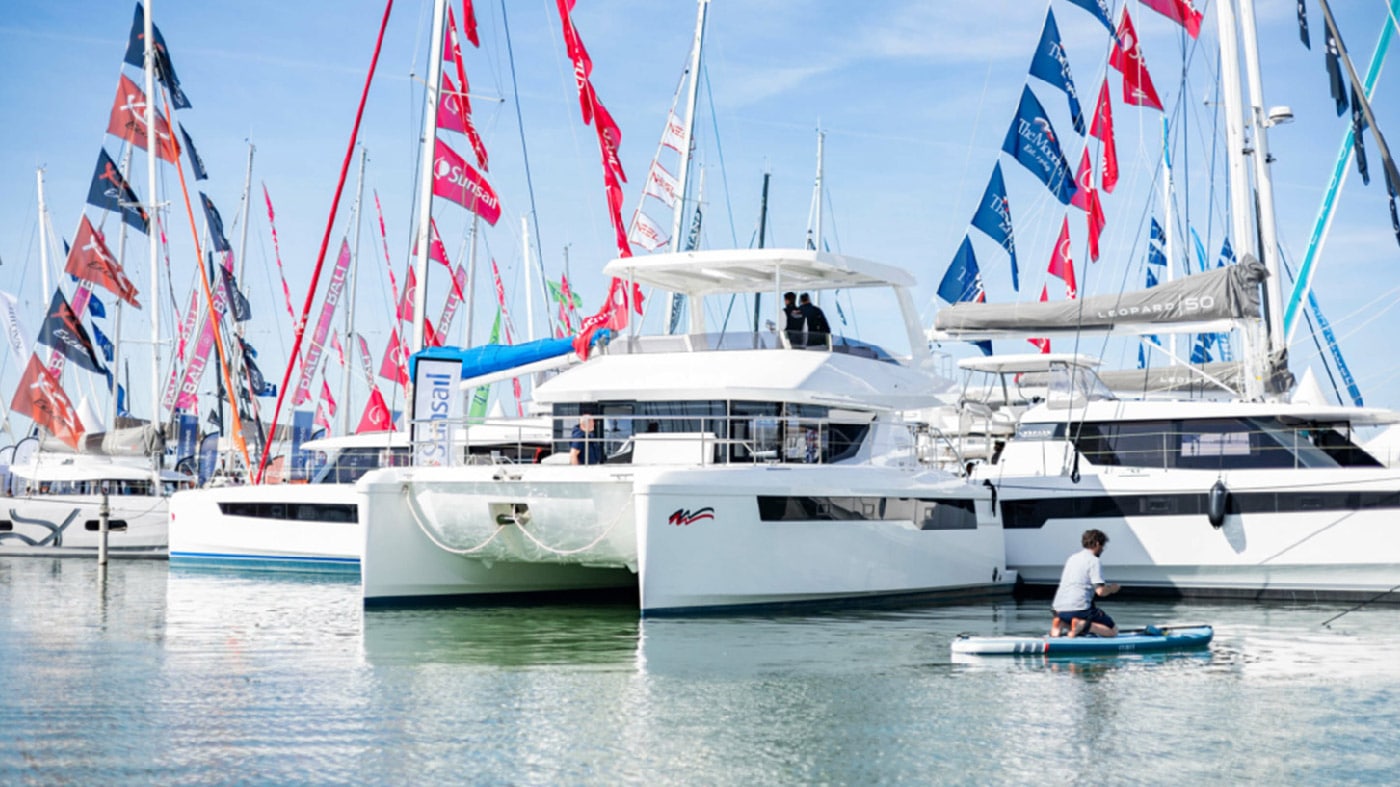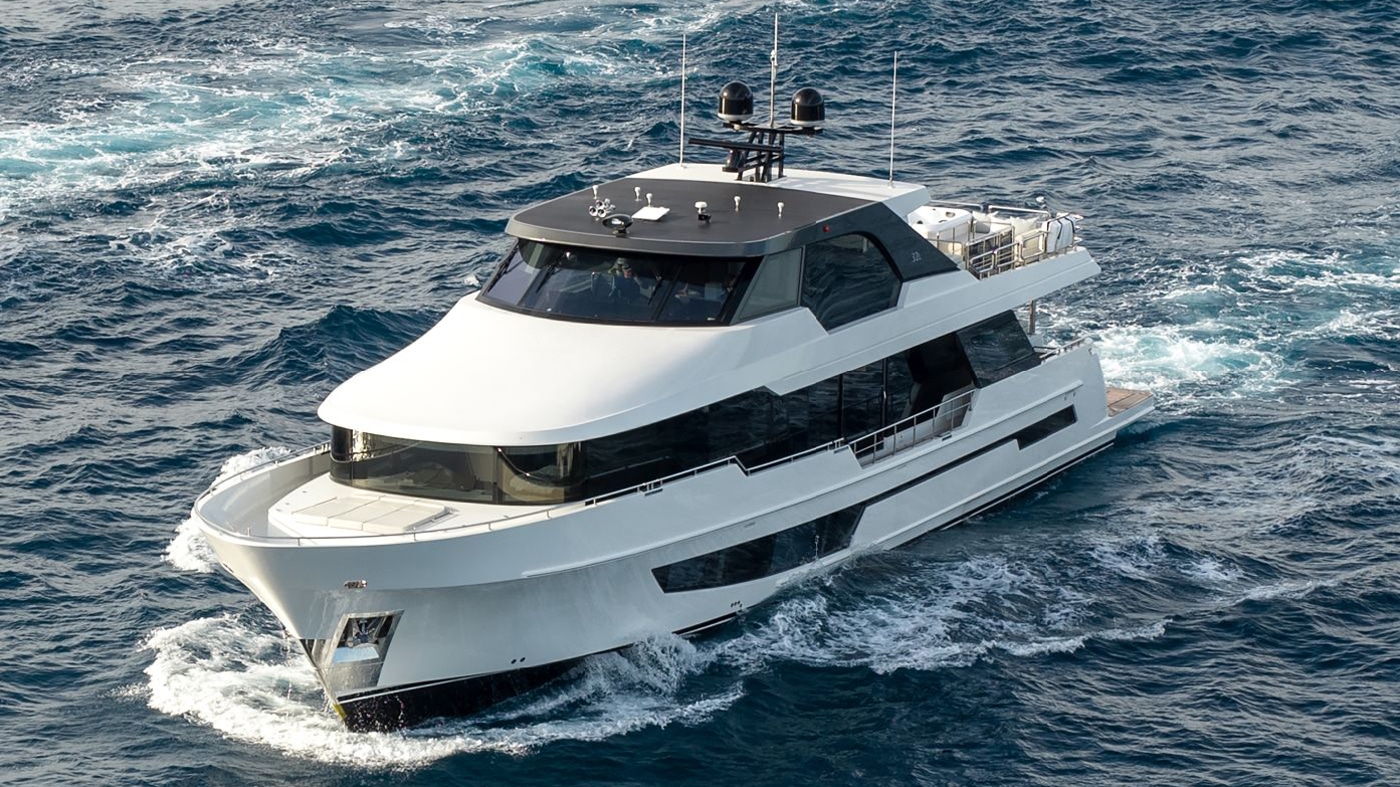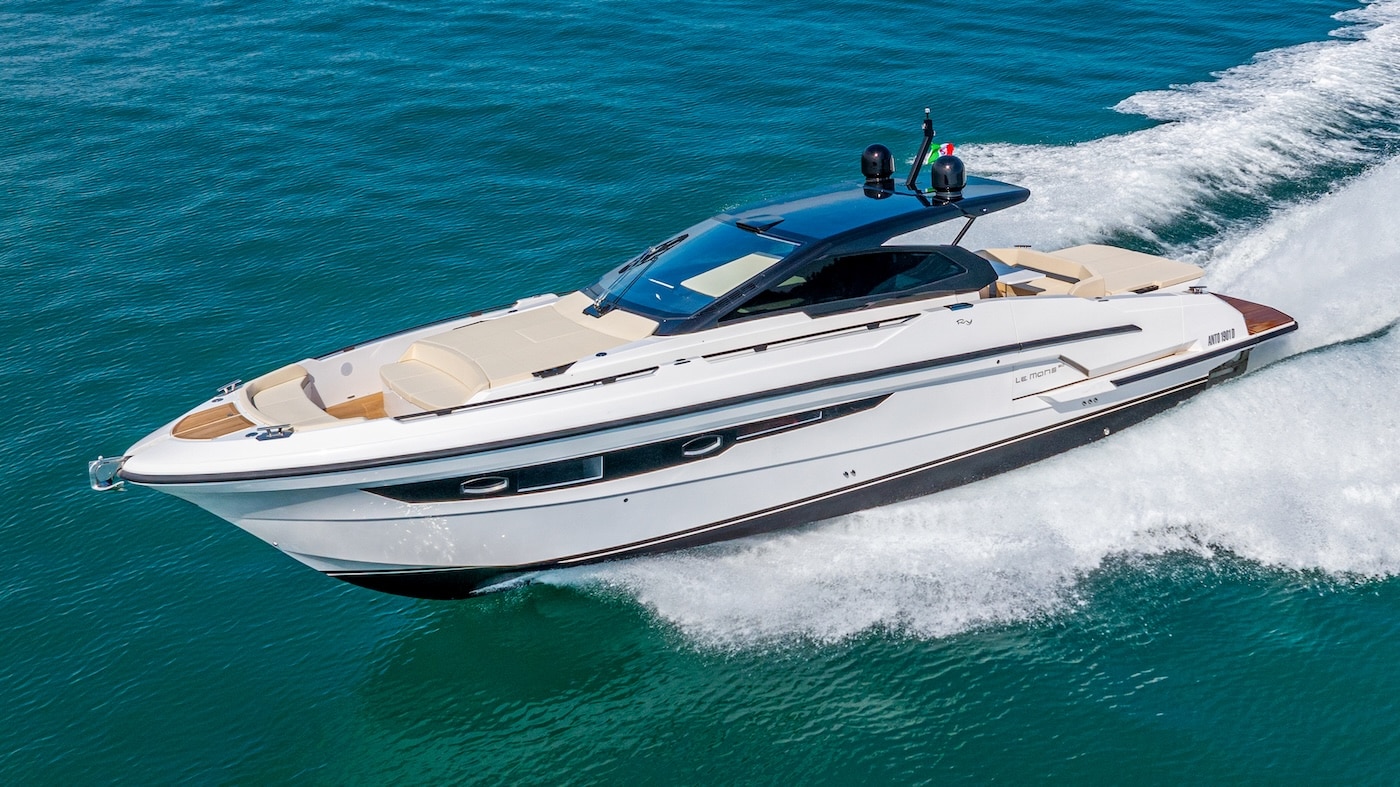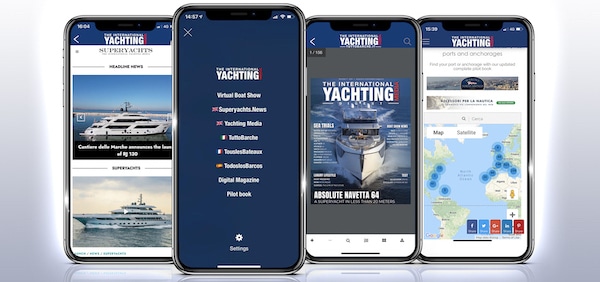Leggi l’articolo in italiano
As already said at its official launch, LTN Venom 26 represents an important event in the world of rubber boats: its hull and deck are entirely made of aluminium, a real innovation on the market. In Northern Europe, where aluminium is widely used in boating, there are some boats provided with aluminium hulls but they are mostly used for work, rather unrefined and with fiberglass furniture in the deck. The “creature” conceived and designed by Ezio Agazzi and Giulio Sottocornola (LTN Group) is something completely different.
Considering its space arrangement and functionality, Venom 26 is a very Mediterranean rubber boat but with a bottom suitable for “hard conditions“: ” The angles are 18° aft and 70° astern, while medium deadrise is 32° – explains Alessandro Chessa, the designer – This rubber boat wants to be able to face hard sea conditions, like mistral and rough sea” So, not only speed? ” Absolutely not, performances are good but our design premises aimed to have a good attitude on the wave, too“.

The bottom is very “long” on water, in the sense that the support points are very distant. This means a greater longitudinal stability, a lower pitching and a constant attitude when speed increases; the move from displacement to surfing is almost imperceptible.
An observation, however, springs to mind: this leads to a greater wetted surface and more resistance: “Generally yes but we solved the problem with the step: this creates an air-cushion which reduces the wetted part of the hull (as you can see in the picture). At the end of tubulars there is special cut cap conceived to not create a suction effect and reduce resistance”. Thanks to the aluminium construction, the traditional support strakes, two on each side, are very reliable and efficient, for example to avoid a lateral sideslipping during fast turns.
We remember that aluminium has some physical and mechanical features which make rubber boats lighter and about 30% more stronger. However, Venom is intentionally not very light (even if its total displacement is low): firstly because it is provided with a large amount of accessories ( all standard, as the philosophy of the yard intended it) and then because such a bottom can’t have a particularly light displacement. Moreover, aluminium boats don’t need moulds (consequently, costs are lower and there are many possibilities of customisation) and it is possible to create some elements with negative angles.
What’s the point? A good example is offered by the seats of the astern U-shaped sofa (which turns into a sunbathing surface by lowering the table): they are wider on their upper part and narrower downwards, which increases the walkable surface in the cockpit. The same thing happens in the central piece of furniture behind the pilot house.
Aluminium allows some other particular solutions, such as that one created for the bow fitting, with a suspended triangle above the tubulars.
Among the things we have liked the most, the particular system used to hide the awning inside the T-top (you can see the mounting system in the video below) and the spacious compartment under the central console, which can be equipped with a small bathroom (an accessory which is getting essential on boats of this size).
One of the aspects which has astonished us, and maybe the most difficult to tell, concerns what is in the lockers, under flooring: hull and bottom are made of aluminium 5083, the structure is entirely cut with laser and HD plasma technology and then assembled through an interlocking system and a double-pulsed-arch welding. This means that, for example, the central part of the console is structural, the tubular saddles work also as longerons and there is a tolerance of 1/10 mm in the construction compared to the project (and, on the whole, almost 1 km of linear welding).
The great attention to details is evident, for example, in the double teflon washers used in each screw 

Venom 26 is provided with two anti-corrosion sacrificial anodes which can easily checked and replaced, exactly like the outboard ones.
Sea trial
Established that Venom 26 is an innovative (and rather brave) project with an excellent construction technology, what are its performances in water? We tested it in no hard conditions (in a lake, with no wave nor wind), with a Suzuki D
Another interesting element is the minimum surfing speed: 8/9 knots, not bad for a 8.17-metre-long boat. A good minimum surfing speed means more safety and low consumption.
The boat is stable when it yaws, even at high speed. We touched amost 41 knots at 5800 revolutions by lifting the trims as much as possible and then we yawed violently: Venom “clings” to the two strakes surprisingly.

Cruising speed? If you are in a hurry, you can travel well at over 36 knots with a consumption of about 1 l/half a mile; but if you have time, at 3500 revolutions Suzuki 250 allows to travel 0.66 miles a litre at 21.5 knots. At 4500 revolutions and 32 knots you will consume about 52 l/h.
LTN 26 Venom – Technical file
Overall Length: m 8.17
Extreme breadth: m 3.17
Breadth when deflated: m 2.50
Weight without engine: kg 1100
Passenger capacity: 14
Maximum power: HP 350
Engine of the test: 1 x 250 HP Suzuki DF 250 AP
EC Design category: B/C
Tubular material: Hypalon-Neoprene ORCA
Construction: hull and bottom are made of aluminium 5083, the structure is entirely cut through a laser and HD plasma technology, then assembled through an intelocking system and a double-pulsed arch welding.
Fuel Tank capacity: l 400
Water Tank Capacity: l 80
On-road transportability: yes, with deflated tubulars
Standard equipment: cushions – hydraulic seastar wheel house – glove pocket – digital electric panel – 12v socket – electric windlass with stainless anchor and chain – chemical wc – way and anchor lights – complete electric system – 400-litre-fuel tank – 80-litre-water tank – bilge pump – shower system – electronic variable-flow-autoclave – stainless stepladder – complete synthetic teck – lifting points – sound system predisposition – bow hatch actuators – console hatch actuators – horn – console led lights – reparation kit – electric inflation system.
Producer: LTN S.r.l.
Via Dell’Industria 25
24126 Bergamo, ITALY
tel. +39 035 322217
info@ltnribs.it
Prices
LTN 26’ Venom with Suzuki DF200AP € 70,866
LTN 26 Venom with Suzuki DF250AP € 73,220
LTN 26’ Venom with Suzuki DF300AP € 74,000
LTN 26’ Venom with Suzuki DF175TG € 83,000
All prices are VAT excluded
LTN 26 Venom – Performances
| (rev/min) | Speed(kn) | Consumption(l/h) |
| 1.000 | 3.6 | 3.8 |
| 1.500 | 6.0 | 6.3 |
| 2.000 | 7.2 | 9.0 |
| 2.500 | 11.0 | 15 |
| 3.000 | 13.3 | 25 |
| 3.500 | 21.4 | 32 |
| 4.000 | 26.7 | 43 |
| 4.500 | 31.7 | 52 |
| 5.000 | 34.1 | 60 |
| 5.500 | 38.5 | 75 |
| 5.800 | 40.9 | 86 |
Conditions of the sea trial: flat sea, 22° C, 5 passengers, 90% of fuel, 5% of water.
Miminum surfing speed: 8/9 kn
Maximum speed: 36.3 knots
https://youtu.be/tVQvOJ_1JwQ
https://youtu.be/XTdRm7335lk






























